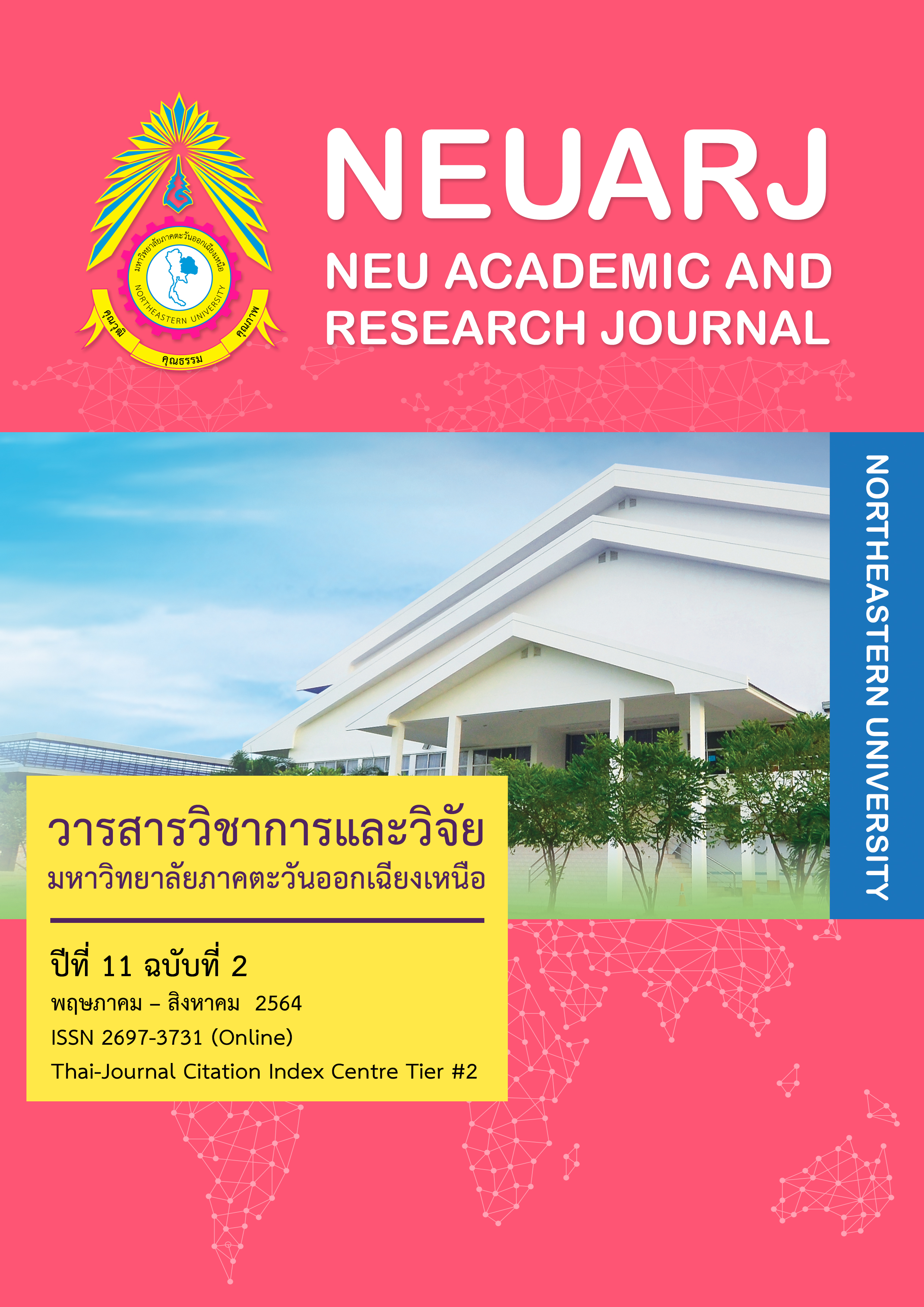กลยุทธ์การจัดการผู้มาเยือนสู่ความยั่งยืนของแหล่งท่องเที่ยว
คำสำคัญ:
กลยุทธ์, การจัดการผู้มาเยือน, การท่องเที่ยวอย่างยั่งยืนบทคัดย่อ
บทความนี้มุ่งศึกษากลยุทธ์การจัดการผู้มาเยือนสู่ความยั่งยืนของแหล่งท่องเที่ยว โดยศึกษาความหมาย กลยุทธ์เกี่ยวกับการจัดการผู้มาเยือนในการจัดการการท่องเที่ยวอย่างยั่งยืน โดยใช้วิธีการสังเคราะห์และสรุปข้อมูลที่ได้จากการทบทวนแนวคิด จากการศึกษาพบว่า กลยุทธ์การจัดการผู้มาเยือนเป็นส่วนหนึ่งของการจัดการด้านพื้นที่อันจะนำไปสู่ความยั่งยืนของแหล่งท่องเที่ยว ผ่านการสร้างความสมดุลในการใช้ทรัพยากรในพื้นที่ให้เกิดประโยชน์สูงสุดและก่อให้เกิดผลกระทบน้อยที่สุดทั้ง 3 มิติ โดยรูปแบบการจัดการผู้มาเยือนในการจัดการแหล่งท่องเที่ยว ประกอบไปด้วย 2 รูปแบบ ได้แก่ 1. การจัดการผู้มาเยือนแบบเข้มงวด อันประกอบด้วยกลยุทธ์การจัดการด้านการจัดการทางกายภาพ กลยุทธ์ด้านกฎระเบียบ และกลยุทธ์การจัดการด้านเศรษฐกิจ ซึ่งมุ่งเน้นความสมดุลระหว่างผลประโยชน์ด้านเศรษฐกิจกับผลกระทบทางลบด้านสิ่งแวดล้อม สังคมวัฒนธรรม และสิ่งแวดล้อม 2. การจัดการผู้มาเยือนแบบอ่อนโยน เป็นการใช้ประโยชน์จากข้อมูลเพื่อสื่อความหมายทางตรง ทางพฤติกรรม และทางการศึกษา ทั้งนี้การจัดการผู้มาเยือนจะช่วยปรับเปลี่ยนพฤติกรรมของผู้มาเยือนให้เกิดความเหมาะสมต่อแหล่งท่องเที่ยว ผ่านการสร้างการเรียนรู้ สร้างความเข้าใจแก่ผู้มาเยือน ผู้มาเยือนจะเกิดประสบการณ์ที่ดี และเกิดความพึงพอใจต่อแหล่งท่องเที่ยว อันจะนำไปสู่ความยั่งยืนของแหล่งท่องเที่ยว
เอกสารอ้างอิง
กระทรวงการท่องเที่ยวและกีฬา. (2559). แผนพัฒนาการท่องเที่ยวแห่งชาติ พ.ศ. 2560-2564. สืบค้นเมื่อวันที่ 15 ธันวาคม 2563,/ จาก https://secretary.mots.go.th/strategy/more_news.php?cid=9
เมธาวี จำเนียร, กรกฎ จำเนียร, ศศิพัชร บุญขวัญ, ทองพูล มุขรักษ์ และยงยุทธ ปาณะศรี. (2562). การสร้างและสื่อสารกิจกรรมการท่องเที่ยวการแสดงพื้นบ้านและส่งเสริมการท่องเที่ยวโดยชุมชน. วารสารวไลยอลงกรณ์ปริทัศน์ (มนุษยศาสตร์และสังคมศาสตร์), 9(3), 199-210.
อารยา จันทร์สกุล. (2561). Overtourism ผลกระทบและแนวทางการจัดการเพื่อความยั่งยืน. สืบค้นเมื่อวันที่ 10 กันยายน 2562 จากhttps://www.bot.or.th/Thai/MonetaryPolicy/Southern/ Research Paper/Overtourism.pdf
Albrecht, J. (2017). Visitor management in tourism destinations. Boston, MA : CABI, 2017. ©2017 University of Otago, Dunedin, New Zealand.
Arabatzis, G., Grigoroudis, E. (2010). Visitors' satisfaction, perceptions and gap analysis: The case of Dadia–Lefkimi–Souflion National Park. Forest Policy and Economics 12, 163–172.
Arnberger, A. and Hußlein, M. (2017). Visitor Monitoring and Management. International Conference on Landscape & Human Health: Forests, Parks and Green Care.
Benckendorff, P. and Pearce, P. (2003). Australian tourism attractions: the links between organizational characteristics and planning. Journal of Travel Research 42(1), 24–35.
Beunders, N. (2006). Visitor Management and Destination Management as Tools for Sustainable Regional Development. Conference on Monitoring and Management of Visitor Flows in Recreational and Protected Areas. University of Applied Sciences Rapperswil, Switzerland, 13-17 September 2006. Rapperswil.
Candrea, A. and Ispas, A. (2009). Visitor management, a tool for sustainable tourism development in protected areas. Brasov,Romania: Bulletin of the Transilvania.
Cole, David N., Petersen, Margaret E. and Lucas, Robert C. (1987). Managing Wilderness Recreation Use: Common Problems and Potential Solutions. Intermountain Research Station. Retrieved from https://www.fs.fed.us/rm/pubs_int/int_gtr230.pdf.
Cooper C. (1991). The technique of interpretation. In Managing Tourism, Medlik Sed. Oxford : Butterworth- Heinemann.
Cooper, C., Fletcher, J., Gilbert, D., Shepherd, R., Wanhill, S. (1998). Tourism: Principles and Practices (2nd ed). England: Addison Wesley Longman.
El-Barmelgy, Hesham Moh. (2013). Visitor Management Plan and Sustainable Culture Tourism. Retrieved from https://ijern.com/journal/December-2013/42.pdf
Garrod, B., Wornell, R., & Youell, R. (2006). Re-conceptualizing rural resources as countryside capital: The case of rural tourism. Journal of Rural Studies, 22, 117–128.
Glasson, J., Therivel, R., Chadwick, A. (2013). Introduction to Environment Impact Assessment (3rd ed.). USA and Canada: Routledge.
Groot, R., (2006). Function-analysis and valuation as a tool to assess land use conflicts in planning for sustainable, multi-functional landscapes. Landscape and Urban Planning 75, 175-186.
Hall, M. & McArthur, S. (2000). Integrated Heritage Management: Principles and Practice. London : Stationery Office, 1998.
Haugland, Nessb, Grønsethb, and Aarstad. (2011). Destination Development: The Role of Interdestination Bridge Ties. Journal of Travel Research 53(2):183-195
Hughes, Bond, & Ballantyne, (2013). Designing and managing interpretive experiences at religious sites: Visitors' perceptions of Canterbury Cathedral. Tourism Management, 36, 210-220.
Inskeep E. (1991). Tourism Planning: an Integrated and Sustainable Development Approach. New York: Van Nostrand Reinhold.
Krippendorf, J. (1987). The Holiday Makers: Understanding the Impact of Leisure and Travel. Oxford: Heinemann.
Leask, A. (2010). Progress in visitor attraction research: towards more effective management. Tourism Management, 31(2), 155–166.
Leitao, A. (2002). Appling Landscape Ecological Concepts and Metrics in Sustainable Landscape Planning. Landscape and Urban Planning, (59), 65-93
Kuo, I.-L. (2002). The effectiveness of Environmental Interpretation at Resource-Sensitive Tourism Destination. Int.j.Tourism Res. (4), 87-101.
Mason, P. (2005). Visitor Management in Protected Areas: From ‘Hard’ to ‘Soft’ Approaches?, Current Issues in Tourism, 8:2-3, 181-194.
Novacek, P. (2010). Udržitelný rozvoj (Sustainable Development). Olomouc. Czech Republic: Uni- verzita Palackého v Olomouci.
Orams. (2007). A conceptual model of tourist‐wildlife interaction: the case for education as a management strategy. Australian Geographer, 39, 51
Pásková, M. (2008). Udržitelnost rozvoje cestovního ruchu (Tourism Sustainability). Hradec Králové, Czech Republic: Gaudeamus Kradec Králové.
Pearce, D.G. and Schänzel, H.A. (2015). Destinations: Tourists’ perspectives from New Zealand. International Journal of Tourism Research, 17(1), 4-12.
Ritchie, J.R.B. and Crouch, G.I. (2003). The Competitive Destination, A sustainable tourism perspective. CABI Publishing, Oxon UK.
Ritchie, J.R.B. and Crouch, G.I. (2010). A model of destination competitiveness/ sustainability: Brazilian perspectives. Adm. Revista de Administração Pública 44(5):1049-1066.
Shackley, M. (1998). Introduction. In M. Shackley (ed.) Visitor Management: Case Studies from World Heritage Sites. Oxford: Butterworth-Heinemann.
Spenceley, A., Kohl, J., McArthur, S., Myles, P. Notarianni, M., Paleczny, D., Pickering, C., Turner, K., Bhutia, P. and Worboys, G. L. (2015). ‘Visitor management’. In: G. Worboys, M. Lockwood, A. Kothari, S. Feary and I. Pulsford (eds.), Protected Area Governance and Management. Canberra: Australian National University Press.
Tilden F. (1977). Interpreting Our Heritage (3rd ed). University of North Carolina Press: Chapel Hill, NC.
Weaver D. B. and Lawton, L. J. (2013). Resident perceptions of a contentious tourism event. Tourism Management, 37(August), 165-175.
Wong, C. U. I., McIntosh, A., and Ryan, C. (2016). Visitor management at a Buddhist sacred site. Journal of Travel Research, 55(5), 675–687.
Zelenka, J. (2007a). Metodický návod MZP CR upravující postup zajistování udrzitelnosti cestovního ru- chu v prirodne a krajinne cenných uzemích ceské republiky – studie (Ministry of Environment Czech Republic Methodology for Tourism Sustainability in Nature Valuable Areas). Prague, Czech Republic: Ministry of Environment.
Zelenka, J. and Pásková, M., (2012). Výkladový slovník cestovního ruchu (The Explanatory Dictionary of Tourism). Praha: Linde Praha.



